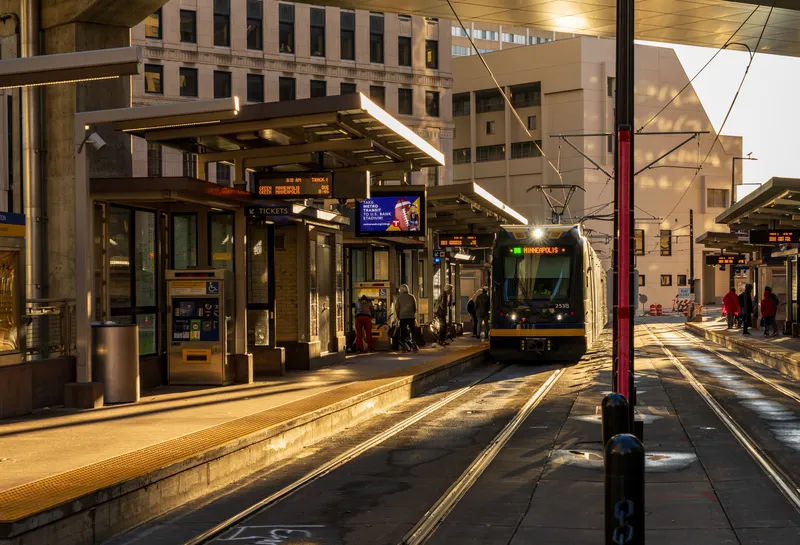San Antonio, Texas’ new Via Primo will be kept on schedule with minimal impact on individual traffic flow with the implementation of a GPS-based bus rapid transit system that allows the bus to automatically request a green light when it is behind schedule and approaching a busy intersection.
July 5, 2013
Read time: 2 mins
San Antonio, Texas’ new Via Primo will be kept on schedule with minimal impact on individual traffic flow with the implementation of a GPS-based bus rapid transit system that allows the bus to automatically request a green light when it is behind schedule and approaching a busy intersection.
189 Siemens Road and City Mobility business has worked with 629 Trapeze Group to create the new transit signal priority (TSP) solution which uses a ‘virtual’ GPS-based detection zone for transit vehicle traffic management without requiring physical detector equipment at the intersection.
The intelligent transportation system operates through Siemens NextConnect software and Trapeze Group’s GPS system. When a bus is in a virtual detection zone, the transit system sends a signal priority request to the Siemens i2 traffic management system. The request is relayed to the intersection traffic controller which requests the traffic system to provide a green light for the approaching transit vehicle
Identifying the need for a new bus rapid transit (BRT) system, San Antonio’s Via Metropolitan Transit wanted to avoid the construction delays and increased costs associated with adding new hardware on the street. The ‘virtual’ detection zones are installed digitally on city traffic servers and are easily adjusted in response to changes in traffic flow due to special events or construction. The flexibility also means VIA and the city can add BRT lines around the region by simply creating a new route and configuring the new detection zones accordingly.
“This solution allows passengers to get to their destination on time, and it will ultimately encourage more usage of the bus system as reliability improves, reducing congestion and greenhouse emissions as people switch from car to bus travel,” said Frank LoPresti, vice president of Siemens Road and City Mobility business.
“Via has been a valued Trapeze customer for more than fifteen years, and they are an award-winning agency for good reason. Their systems and processes are state of the art, and their customer-centric focus is to be applauded,” stated John Hines, president of Trapeze Group.
The intelligent transportation system operates through Siemens NextConnect software and Trapeze Group’s GPS system. When a bus is in a virtual detection zone, the transit system sends a signal priority request to the Siemens i2 traffic management system. The request is relayed to the intersection traffic controller which requests the traffic system to provide a green light for the approaching transit vehicle
Identifying the need for a new bus rapid transit (BRT) system, San Antonio’s Via Metropolitan Transit wanted to avoid the construction delays and increased costs associated with adding new hardware on the street. The ‘virtual’ detection zones are installed digitally on city traffic servers and are easily adjusted in response to changes in traffic flow due to special events or construction. The flexibility also means VIA and the city can add BRT lines around the region by simply creating a new route and configuring the new detection zones accordingly.
“This solution allows passengers to get to their destination on time, and it will ultimately encourage more usage of the bus system as reliability improves, reducing congestion and greenhouse emissions as people switch from car to bus travel,” said Frank LoPresti, vice president of Siemens Road and City Mobility business.
“Via has been a valued Trapeze customer for more than fifteen years, and they are an award-winning agency for good reason. Their systems and processes are state of the art, and their customer-centric focus is to be applauded,” stated John Hines, president of Trapeze Group.










